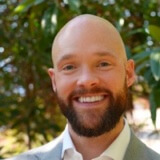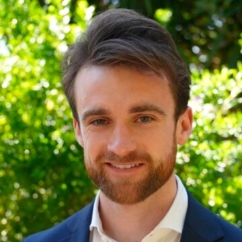The reinsurance industry is in the midst of a significant transformation as technology makes its impact on the role and value of reinsurance brokers.
Alvin Toffler first set out the ideas of ‘waves’ as a way to describe transformational changes that societies experience through the continual pursuit of improvement in his 1980 book, The Third Wave.
The steady progression of society first depends on establishing an agricultural society (Wave 1), which allows for the development of an industrial age (Wave 2), before finally shifting into a post-industrial age defined by information (Wave 3).
In 2016, inspired by the ideas of Toffler, Steve Case penned The Third Wave: An Entrepreneur’s Vision of the Future, offering a look at how modern technology could similarly transform society.
Case viewed the internet through this lens, establishing three ‘waves’ of disruption and impact: Wave 1 was the establishment of internet foundations, Wave 2 was defined by increasing connectivity, creating massive value and delivering new technologies, and Wave 3 was focused on the real world disruption that would result from this relentless push forward.
As reinsurtech continues to accelerate, I believe that we’re now entering the third wave of reinsurance broking.
Wave 1: Laying the Foundations
The critical first waves of both Toffler and Case set out the prerequisites of future development. We can’t progress towards an industrial revolution until we’ve established an agricultural base. Likewise, we can’t connect the world of information until we’ve set the basic protocols of how the internet will work.
The first wave of reinsurance broking was similarly foundational: solving the core challenges of helping to ensure that insurance companies could secure the capital they needed to protect their balance sheets. Brokers during this wave were defined by their personal networks and salesmanship to ensure they got their clients the capacity they needed at the best possible price.
As capacity began to emerge from around the world, so too did brokers expand their footprint, ensuring they had the widest pool of capital to choose from to support their clients.
Like the establishment of agriculture and internet protocols, these core foundations remain essential for reinsurance broking as we progress through future waves.
Wave 2: The Same, but Better
When comparing the second waves of Toffler and Case, they could each be described as a step change in improving what was established in wave one.
The industrial revolution allowed us to lean into our established societies and begin optimising what it meant to live efficiently together. We found faster ways to produce goods and services and reduce the cost of acquiring them.
We identified problems with living in close proximity and found ways to fix them. Often, solutions created new problems, which again required solutions.
This ‘same, but better’ definition could also describe Case's second wave of the internet. With protocols set, we began to improve what we’d started with. Communication, core to the first wave, developed into worldwide social networks. Information sharing evolved from its initial use case for governments and educational institutions to centralising and organising the world’s knowledge.
Technology advanced through the constant pursuit of better.
Maps evolved from directions you could print out and take in your car (I’m dating myself now!) to real-time turn-by-turn directions that notify you of upcoming perils on the road.
Entertainment, too, evolved. We still love music, tv shows and movies but the continuous pursuit of 'better' means it's now easier to discover, faster to access and more convenient to enjoy.
The same. But better.
Returning to our view of the reinsurance broker, they too are in the age of: same, but better.
Brokers have gotten radically more sophisticated over the last couple of decades. Early reinsurtech solutions like catastrophe modelling have made it easier for brokers to understand the exposure of their client’s most significant risks and allowed them to work closely with the clients and reinsurers to find solutions.
Far from the brokers in wave one, which could have been more easily defined by their ‘gift of the gab’, modern brokers lead with information and data. They talk to the reinsurers in terms of return periods and ultimate net losses.
Brokers have leveraged internal and external tools to help them better understand their clients' portfolios and create bespoke solutions to help them achieve their business objectives. However, despite the impact these solutions have had on cedents, brokers, and reinsurers alike, the industry remains plagued by inefficiency in the form of janitorial data work and rekeying.
Before brokers can run sophisticated analytics for their clients, they must first spend weeks (if not months) re-working and cleansing the submission data.
But technology has the potential to streamline workflows, automate repetitive tasks, and improve accuracy in data management.
We are quickly approaching the days where the janitorial tasks of data cleansing, marketlist updating, and data rekeying will be a thing of the past. And it is this step-change that will transition us into the third wave of reinsurance broking.
Wave 3: New Horizons
The third wave is where things get interesting as societies and industries stand on the shoulders of the giants that came before them and look out to the horizon for what’s next.
The third wave is when creativity, innovation and ambition thrive.
For Toffler, it was the recognition that we shifted from a production society to a society defined by information. Despite all the jobs that vanished during the industrial revolution, we adapted and have grown exponentially since the end of the industrial era with global GDP increasing from $1.2T in 1820 to nearly $120T today.
We found opportunities to build and deliver things that couldn’t have been conceived just a few generations earlier and transformed the world in countless ways.
Case, too, saw the third wave as the point when we transitioned into the ‘new’ and the innovation delivered by the internet began to deliver ‘real world disruption’.
City planning, security, politics, financial institutions and more have all been redefined in this third wave; each creating more data over a couple of years than ever before in history. The tight feedback look of the modern world means that every byte of new data created further accelerates the speed of innovation and change in real-world solutions.
The speed of adoption and impact of ChatGPT is just a small example of how quickly the world can and will evolve in the third wave.
So what does the third wave mean for a reinsurance broker?
If we look at the third wave of Toffler and Case, it’s evident that the third wave leverages technology to remove low-value work and replace it with something far more valuable. It improves efficiency to free up time to deliver even greater impact.
Brokers in our third wave will spend less time helping their clients to clean bad data and more time helping them evaluate alternative risk structures. They’ll spend less time updating marketlists and more time managing delicate, data-led negotiations.
Instead of entering this third wave with trepidation, most brokers are leaning into this new world. Never before has there been such an opportunity for ‘new’ in the reinsurance industry, and brokers have spent the last two decades laying the groundwork to take advantage of this sea change.
As we enter a reinsurance world with better, cleaner data being delivered by clients in weeks instead of months, brokers are well-equipped with the skills to take advantage of this data to deliver value for their clients.
The third wave for reinsurance brokers might just become their golden era.
And I, for one, am here for it.


